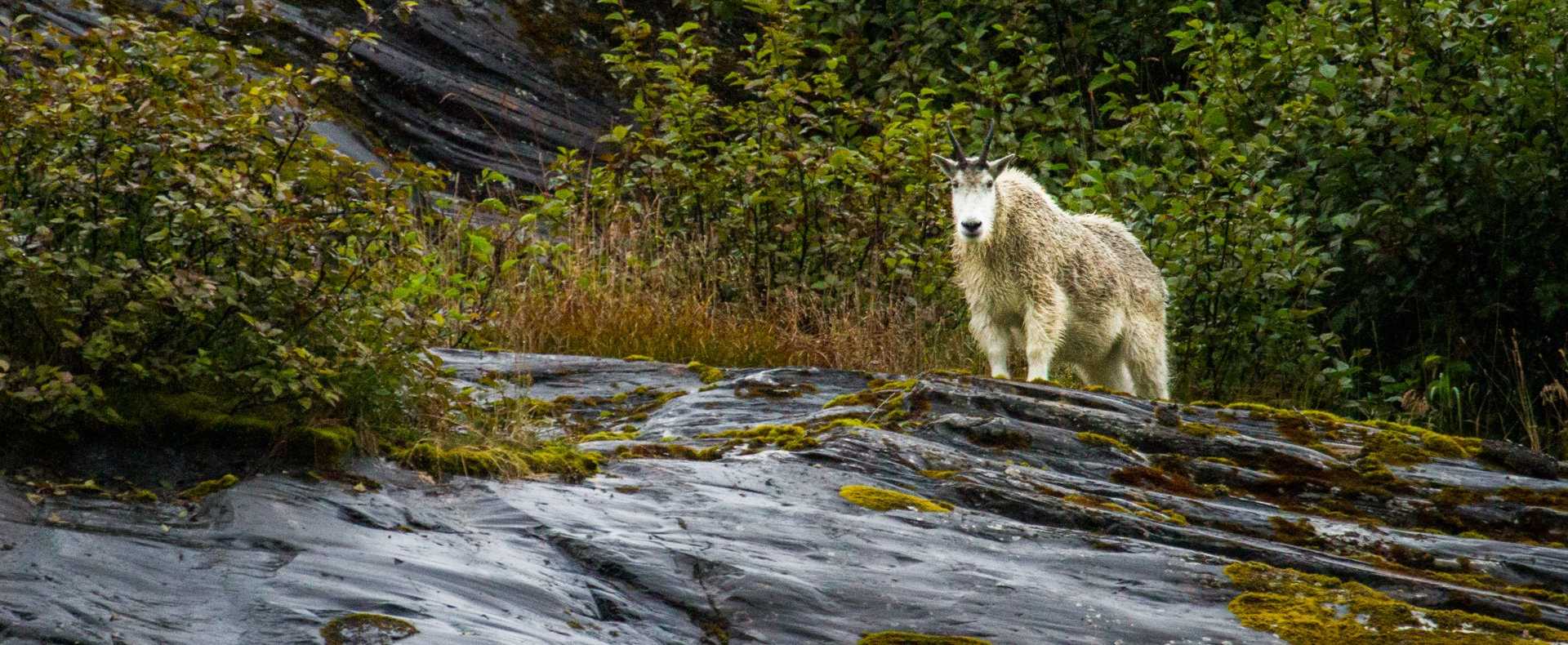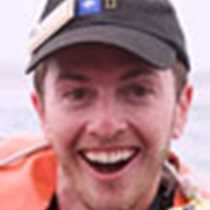Dawn light crept through the low clouds to find the National Geographic Sea Bird steaming towards Tracy Arm-Ford’s Terror Wilderness. We crossed over the 1500-year-old sandbar that marks the old terminal moraine of the glaciers we sailed towards and icebergs began appearing in the waters around us. Before breakfast we snaked our way down the Tracy Arm fjord with steep 2,000 foot cliffs rising above and 1,000 foot depths of chilly water below. We passed countless waterfalls rushing down the steep sides and spied hanging glaciers suspended in the upper reaches of the steep coastal range.
After breakfast we approached the end of the fjord and launched our expedition landing craft to get closer looks at the magnificent South Sawyer glacier. As we wended our way through a gallery of sculpted ice floating in the water, we spotted some mountain goats perched on the cliffs above the fjord. Swimming between the bergs we also encountered several curious harbor seals still hanging around amongst the ice after the pupping season which draws them to the safety of the icebergs had ended. Rounding a bend, the jumble of seracs and crevasses that comprise South Sawyer came into view and we marveled at the phenomenal blue hue.
In the afternoon undersea specialist Caitlyn Webster and marine oceanographer Steve Berkowitz performed a plankton tow sharing their insights into the diversity of minute marine life. Following them, National Geographic photographer Dan Westergren began his presentation on photography and sense of place but was soon interrupted by scores of humpbacks tail throwing, flipper flapping, and breaching till time came for cocktails and dinner.






